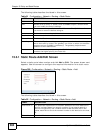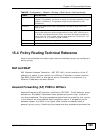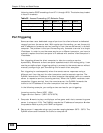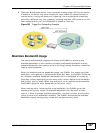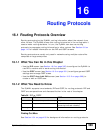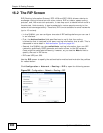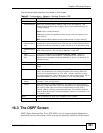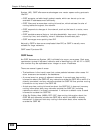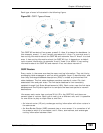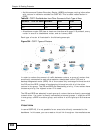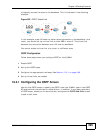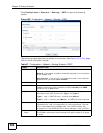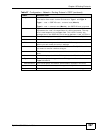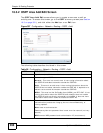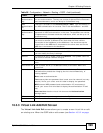
Chapter 16 Routing Protocols
ZyWALL USG 300 User’s Guide
392
System (AS). OSPF offers some advantages over vector-space routing protocols
like RIP.
• OSPF supports variable-length subnet masks, which can be set up to use
available IP addresses more efficiently.
• OSPF filters and summarizes routing information, which reduces the size of
routing tables throughout the network.
• OSPF responds to changes in the network, such as the loss of a router, more
quickly.
• OSPF considers several factors, including bandwidth, hop count, throughput,
round trip time, and reliability, when it calculates the shortest path.
• OSPF converges more quickly than RIP.
Naturally, OSPF is also more complicated than RIP, so OSPF is usually more
suitable for large networks.
OSPF uses IP protocol 89.
OSPF Areas
An OSPF Autonomous System (AS) is divided into one or more areas. Each area
represents a group of adjacent networks and is identified by a 32-bit ID. In OSPF,
this number may be expressed as an integer or as an IP address.
There are several types of areas.
• The backbone is the transit area that routes packets between other areas. All
other areas are connected to the backbone.
• A normal area is a group of adjacent networks. A normal area has routing
information about the OSPF AS, any networks outside the OSPF AS to which it is
directly connected, and any networks outside the OSPF AS that provide routing
information to any area in the OSPF AS.
• A stub area has routing information about the OSPF AS. It does not have any
routing information about any networks outside the OSPF AS, including
networks to which it is directly connected. It relies on a default route to send
information outside the OSPF AS.
• A Not So Stubby Area (NSSA, RFC 1587) has routing information about the
OSPF AS and networks outside the OSPF AS to which the NSSA is directly
connected. It does not have any routing information about other networks
outside the OSPF AS.



